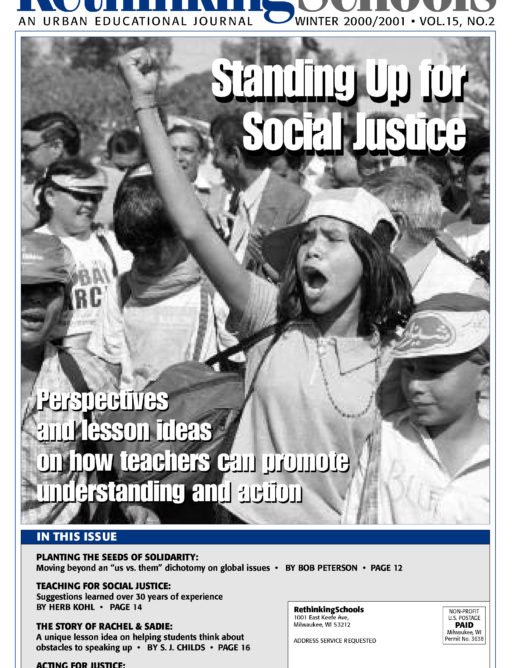Preview of Article:
Acting for Justice
Students sometimes have difficulty seeing how they can stand up against oppression. Here are some ways to help students to "practice" behaving as allies.
I developed this “Acting for Justice” unit for students to “practice” behaving as allies. In the past few years, I connected this acting for justice lesson to literature or history that demonstrated both ally behavior and purposeful organizing for change. Although this activity can stand alone, I use it when I teach Melba Patillo Beals’ autobiography Warriors Don’t Cry. The book tells the story of Beals’ days as one of the “Little Rock Nine” who struggled to integrate Central High School in Arkansas. The story is an insider’s view of integration – the large and the small story of how people fight for change.
As students read the book, I ask them to keep track of people who act as allies for the Little Rock Nine. And they do – from the NAACP leaders who fought for integration to the white woman who led Elizabeth Eckford to safety on the first day of integration to Melba’s white classmate, Link, who called her nightly to let her know which halls to avoid, and who helps her escape torture on numerous occasions.
We also read an interview with James Farmer, one of the founders of CORE, Committee of Racial Equality. In the interview, Farmer discusses some of CORE’s early activities in the 1940’s using Gandhi’s nonviolent strategies to integrate Jack Spratt’s, a Chicago restaurant. (See box) Students love the white customers who aren’t part of the sit-in, but who realize what is happening and act as spontaneous allies refusing to leave their seats or eat. They chuckle at the ingenuity of the allies’ answer when they, too, are asked to “eat and get out.” They answer, “Well, madam, we don’t think it would be polite for us to begin eating our food before our friends here have also been served.” As we read the interview, I ask students to answer the restaurant personnel as if they are CORE members. “The restaurant says they will serve the Blacks in the basement. How do you answer them?”
The students yell, “No. We won’t be served in the basement.”
I come back at them with the restaurant’s next proposal. “The restaurant says they will serve the Blacks at the two booths in the back of the restaurant. How do you answer them?”</p

